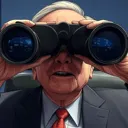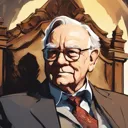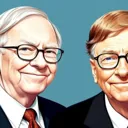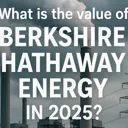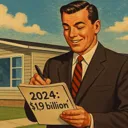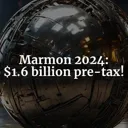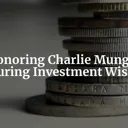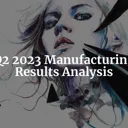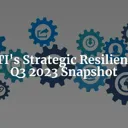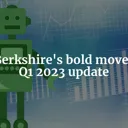Tags: Comments
This fanpage is not officially affiliated with Berkshire Hathaway: Disclaimer
An unprecedented glitch briefly de-valued Berkshire Hathaway shares significantly. Explore the causes, effects, and historical parallels of this unprecedented event, and gain valuable insights of modern financial markets.
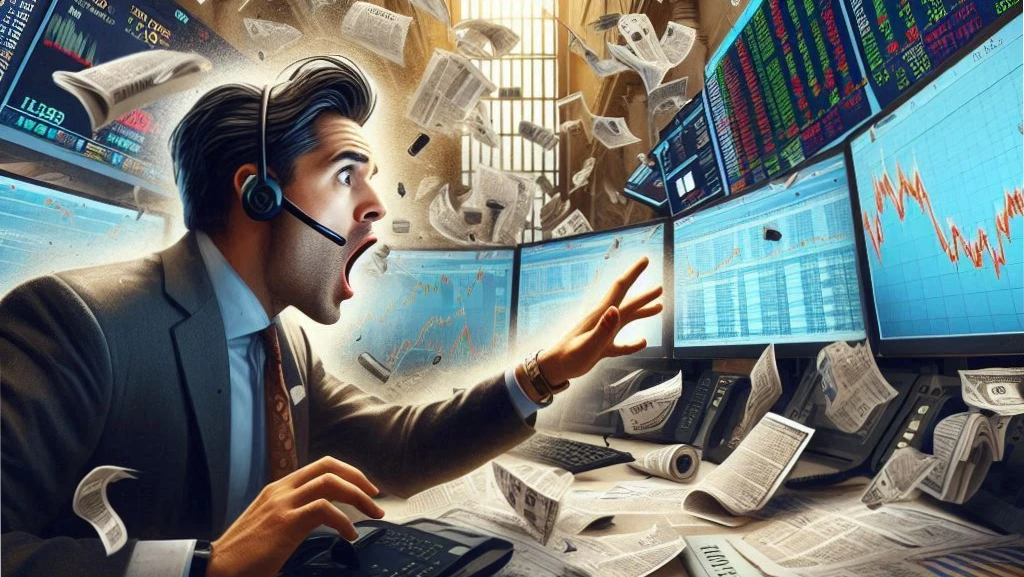
Introduction
On June 3rd 2024, a seemingly ordinary Monday morning, the financial world was jolted by an unprecedented event. Berkshire Hathaway's Class A shares, typically trading around a staggering $635,000, were suddenly displayed at a mere $185.10—a near 100% drop in value 2. This value corresponds to just around $0.12 per Class B share because of the 1:1,500 conversion ratio from Class A to Class B shares 5 ↗. This bizarre anomaly caused immediate shock and confusion among investors and trading platforms alike. In a matter of moments, Forbes briefly reported that Warren Buffett, Berkshire Hathaway's legendary CEO, had lost a mind-boggling $136 billion 2.
To grasp the magnitude of this event, one must understand the significance of Berkshire Hathaway ↗. With a market capitalization nearing $900 billion, Berkshire Hathaway is not just a cornerstone of the American economy but a bellwether for the stock market 2. The company's vast portfolio includes subsidiaries ↗ like GEICO and significant investments ↗ in giants such as Apple. Thus, any dramatic shift in its stock price sends ripples across the financial landscape.
The purpose of this article is to unveil the causes, effects, and historical parallels of this unprecedented glitch. By dissecting the technical breakdown, immediate responses, and broader implications, we aim to provide Berkshire Hathaway shareholders with a comprehensive understanding of this event. Understanding this glitch is crucial, not just for its immediate impact but for the lessons it offers in navigating the complexities of modern financial markets.
In the sections that follow, we will delve into the technical aspects of the glitch, the immediate reactions from various stakeholders, and the steps taken to resolve the issue. We will also explore historical parallels, the immediate aftermath, and the broader implications for the financial world. This thorough examination will equip shareholders with the knowledge needed to comprehend the full scope of this historic glitch.
The Glitch
The glitch that caused such a dramatic drop in Berkshire Hathaway's share price was rooted in a technical issue with the price bands published by the Consolidated Tape Association (CTA). These price bands are crucial for maintaining accurate real-time share price information across trading platforms 123. On this fateful morning, the CTA experienced an issue, possibly related to a new software release, which led to the dissemination of erroneous price data 3. This glitch triggered trading halts on up to 40 symbols listed on NYSE Group exchanges, including major stocks like Barrick Gold ↗, Chipotle, GameStop, and AMC 12.
In response to the erroneous data, the NYSE decided to halt trading and cancel all trades conducted at or below around $604k before the halt 3. This decision was aimed at mitigating the impact of the glitch and restoring order to the market. However, the trading halt led to further complications. Customers of Interactive Brokers, expecting to capitalize on the artificially low price of $185 per share, placed buy orders during the halt 1. When trading resumed, Berkshire Hathaway's shares shot up to $741,941 🚀, far exceeding their pre-glitch value 1.
Interactive Brokers found itself in a precarious position. The NYSE refused to cancel their deals and denied compensation claims, leaving Interactive to take over the trades as a customer accommodation 1. This decision resulted in a staggering $48 million loss for Interactive Brokers 1. The broader stock market, already jittery due to economic growth concerns, saw additional volatility due to the glitch 3. What a day!
The resolution of the glitch involved relying on a secondary data center to correct the inaccurate price information 3. Trading resumed after nearly two hours, but the event left a lasting impression on the financial community. Despite the chaos, the NYSE and Intercontinental Exchange found no indication of a cyberattack, attributing the issue solely to the technical malfunction 34.
This historic glitch serves as a stark reminder of the vulnerabilities in our increasingly digital financial systems. As we continue to explore the ramifications of this event, it becomes clear that the lessons learned will be invaluable for preventing similar occurrences in the future.
Historical Parallels
The Berkshire Hathaway glitch is not an isolated incident in the history of stock exchanges. Similar technological failures have plagued the financial markets for decades, each leaving a significant mark on trading dynamics and investor confidence.
One of the most notable events was the 2013 Nasdaq flash freeze, which halted trading for three hours due to a failure in the Securities Information Processor (SIP) 7. This incident disrupted trading for major companies and raised serious concerns about the reliability of electronic trading systems. Similarly, the 2015 NYSE outage caused by communication issues following a software update led to a four-hour trading halt, affecting numerous stocks and shaking investor trust 7.
These historical glitches have consistently led to massive disruptions in trading. The 2013 Nasdaq freeze, for instance, left traders unable to execute orders, leading to significant financial losses and a temporary loss of market liquidity. In the case of the 2015 NYSE outage, traders were left in the dark, unable to buy or sell stocks, which created a ripple effect across other exchanges and markets.
The recurring theme in these events is the technological vulnerabilities inherent in modern stock exchanges. From the manual recording errors in 1967 to the cyberattacks in 2011, the evolution of trading technology has been fraught with challenges 6. These vulnerabilities highlight the need for robust systems and contingency plans to handle unexpected failures.
The broader economic consequences of such glitches are profound. Market volatility often spikes, leading to investor panic and significant financial losses ↗. For example, the 2010 "flash crash" saw the Dow Jones Industrial Average plummet nearly 1,000 points within minutes, erasing billions of dollars in market value before a partial recovery 7. Such events underscore the fragility of market stability in the face of technological failures.
Regulatory bodies like the SEC have historically responded to these glitches with a mix of fines and new regulations. After the Facebook IPO debacle in 2012, where technical issues left traders in the dark for hours, Nasdaq agreed to pay a $10 million fine to the SEC 7. These regulatory responses aim to enforce accountability and encourage the development of more resilient trading systems.
Investor behavior during such glitches typically involves panic selling and opportunistic buying. The sudden drop in Berkshire Hathaway's Class A share price to $185.10, for instance, would have created a buying frenzy among those hoping to capitalize on the apparent bargain. However, such actions can exacerbate market instability and lead to further financial losses when prices correct.
The lessons from past glitches are clear: robust technological infrastructure, effective regulatory oversight, and transparent communication with investors are crucial. These lessons are directly applicable to the Berkshire Hathaway incident, emphasizing the need for continuous improvement in trading systems and protocols to prevent future occurrences.
The Immediate Aftermath and Broader Implications
The immediate aftermath of the Berkshire Hathaway glitch was marked by a mix of confusion, rapid response, and significant financial implications.
The broader stock market reacted with a general downturn, largely driven by economic growth concerns 3. This added to the volatility created by the glitch, compounding the uncertainty faced by investors. Investor sentiment, particularly among Berkshire Hathaway shareholders, was understandably shaken. The erroneous display of a near 100% loss in share value led to widespread panic and confusion. The media coverage, including Forbes' brief display of Warren Buffett's supposed $136 billion loss, only fueled the anxiety 24.
Media outlets were quick to cover the event, highlighting the dramatic drop in Berkshire's market cap from almost $900 billion to below $1 billion. Such sensational headlines drew significant attention, further impacting investor sentiment and market perceptions 24.
Despite the initial panic, the stock prices for Class A and Class B shares were largely unaffected in their current valuations. As of July 5th, 2024, Class A shares were trading around $611,000, and Class B shares around $405 each, indicating a swift recovery and correction of the erroneous prices 8.
The legal and financial repercussions for the NYSE and other involved parties are still unfolding. There may be potential lawsuits and demands for compensation from affected investors and firms. Regulatory bodies will likely scrutinize the incident to prevent future occurrences.
The historic glitch that caused Berkshire Hathaway’s Class B shares to plummet to 12 cents, as calculated from the drop of the Class A shares, has far-reaching implications that extend beyond the outlined immediate financial losses. It underscores several critical issues in the modern financial ecosystem, from market stability to technological dependence and regulatory oversight.
Market stability is the bedrock of investor confidence. When a glitch can cause a stock like Berkshire Hathaway to drop from $622,000 to $185 1, it shakes the very foundation of trust in the financial markets. Such extreme volatility, even if temporary, can lead to panic selling, erroneous trades, and significant financial losses for investors. This incident highlights the need for robust mechanisms to ensure market stability even in the face of technical failures.
The modern stock exchange is heavily reliant on technology, and this incident is a stark reminder of the risks associated with this dependence. The glitch was traced back to a technical issue with the price bands published by the Consolidated Tape Association (CTA), possibly related to a new software release 23. Such technical dependencies mean that a single point of failure can have cascading effects across the market. As we continue to integrate advanced technologies into financial systems, the potential for such disruptions increases, necessitating greater vigilance and more robust fail-safes.
The role of regulatory oversight in preventing and managing such glitches cannot be overstated. The NYSE’s decision to cancel all erroneous trades for Berkshire Hathaway between 9:50 am ET and 9:51 am ET was a crucial step in mitigating the immediate impact. However, the refusal to cancel trades for Interactive Brokers highlights the limitations and challenges faced by regulatory bodies in such situations 1. There is a pressing need for clearer guidelines and more proactive measures to prevent such incidents and protect investors.
The incident also brings to light the need for better investor protection mechanisms. Investors who placed buy orders during the halt, expecting to fill at $185/share, were caught off guard when shares shot up to $741,941 once trading resumed 1. Such situations can lead to significant financial losses and erode investor confidence. Enhanced safeguards and compensation mechanisms are essential to protect investors from the fallout of technical failures.
Looking ahead, stock exchanges must focus on future preparedness to mitigate the impact of similar glitches. This includes investing in redundant systems, conducting regular stress tests, and developing contingency plans for technical failures. The reliance on a secondary data center to fix the issue3 is a step in the right direction, but more comprehensive strategies are needed to ensure resilience.
The broader economic impact of such glitches extends to market liquidity and capital flows. Erroneous trades and trading halts can disrupt the normal functioning of markets, affecting everything from price discovery to trading volumes. This can have ripple effects across the economy, influencing investor behavior and potentially leading to long-term shifts in market dynamics.
To improve the resilience of stock exchanges against technical failures, several policy recommendations can be made. These include enhanced regulatory frameworks, mandatory stress testing of trading systems, and greater transparency in the reporting and resolution of technical issues. Additionally, collaborative efforts between regulatory bodies, stock exchanges, and technology providers are essential to develop comprehensive solutions.
Relevant economic theories can help explain market behavior during technical failures. The Efficient Market Hypothesis (EMH), for instance, suggests that markets quickly incorporate all available information. However, during a glitch, the dissemination of inaccurate information can lead to inefficiencies and mispricings. The Behavioral Finance Theory also provides insights into how investor psychology influences market reactions during periods of extreme volatility.
The psychology of market participants during periods of extreme volatility caused by technical failures is also a critical area of analysis. Fear, uncertainty, and panic can drive irrational behavior, leading to erratic trading patterns and exacerbating market instability. Understanding these psychological factors is essential for developing strategies to manage investor behavior during such crises.
The Berkshire Hathaway glitch serves as a powerful reminder of the vulnerabilities inherent in our technologically-driven financial markets ↗. It underscores the need for enhanced regulatory oversight, better investor protection, and robust future preparedness. By addressing these issues, we can build a more resilient and stable financial system capable of withstanding the challenges of the digital age.
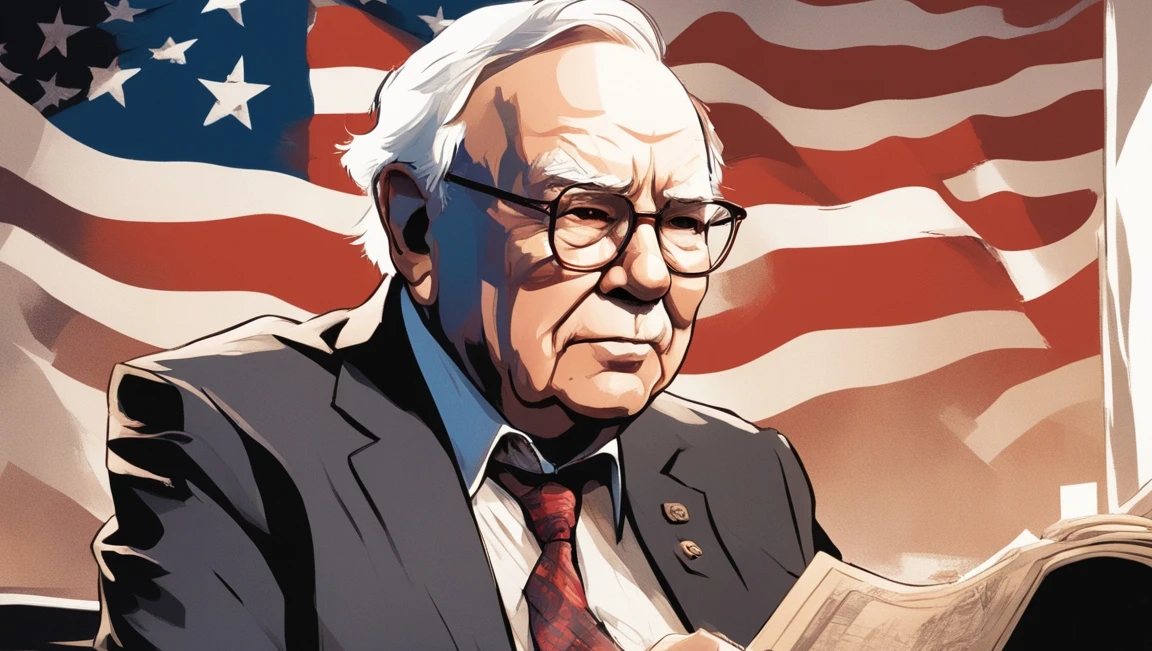
Conclusion
The Berkshire Hathaway glitch that caused Class A shares to plummet to $185, which corresponds to 12 cents per Class B share was a historic event with far-reaching implications for the financial markets. The glitch, rooted in a technical issue with price bands published by the CTA, highlighted the vulnerabilities of our technologically-driven financial systems. The immediate aftermath saw market volatility, investor panic, and significant financial losses, underscoring the need for enhanced regulatory oversight and better investor protection.
By examining historical parallels, we can draw lessons on the importance of robust technological infrastructure, effective regulatory responses, and transparent communication with investors. The incident also shed light on the economic consequences of such glitches, emphasizing the fragility of market stability in the face of technical failures.
Looking ahead, future preparedness and policy recommendations are essential to prevent similar incidents and protect investor interests. Market stability, technological dependence, regulatory oversight, and investor protection must be prioritized to build a more resilient financial system capable of withstanding the challenges of the digital age.
For Berkshire Hathaway shareholders, the glitch serves as a reminder to stay informed, maintain a long-term perspective, and engage with company updates and market developments. Despite the chaos, Berkshire Hathaway's ability to weather such crises showcases its resilience as a company.
References
-
NYSE trading glitch costs Interactive Brokers $48mn - www.ft.com ↩↩↩↩↩↩↩↩↩
-
Berkshire Hathaway Stock No Longer Appears Down 100% As NYSE Fixes Glitch - www.forbes.com ↩↩↩↩↩↩↩↩
-
NYSE says bizarre glitch that showed Berkshire Hathaway down 99.97% has been resolved | CNN Business - edition.cnn.com ↩↩↩↩↩↩↩↩↩
-
Berkshire Hathaway Stock No Longer Appears Down 100% As NYSE Fixes Glitch - www.forbes.com ↩↩↩
-
The Berkshire Hathaway Fanpage - brk-b.com; own, very simple calculation based on the 1 to 1500 conversion ratio between A and B shares. We have not seen actual evidence of Class B shares being priced at 12cents on June 3rd 2024. ↩
-
A History of Stock Exchange Failures (Published 2015) - www.nytimes.com ↩
-
A short history of stock market technical 'glitches' and 'flash freezes' - www.cnbc.com ↩↩↩↩
-
Berkshire Hathaway Inc. (BRK-B) Stock Price, News, Quote & History - Yahoo Finance - finance.yahoo.com ↩
